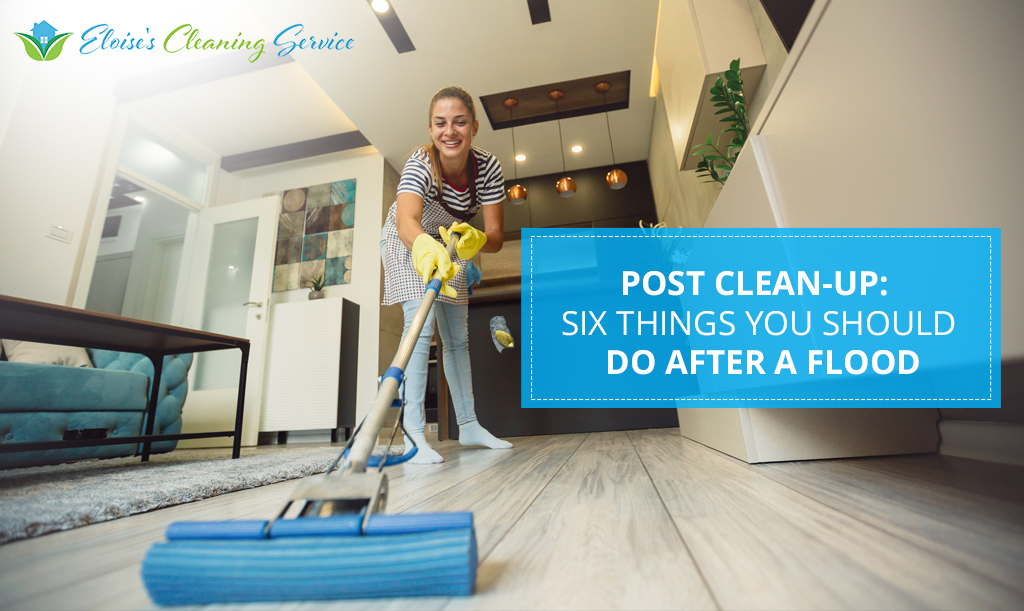Imagine a relentless onslaught of heavy rain, drenching your community without mercy. Forced to seek refuge in a drier area, you huddled with your loved ones, clutching a few cherished belongings.
Now, as the storm finally subsides, you return home only to be greeted by a devastating sight—a flooded house. Overwhelmed and unsure where to begin, despair threatens to consume you. But fear not, for House Cleaning Professionals are here to lend a guiding hand.
Eloise’s Cleaning Services has compiled essential insights and invaluable tips to help you navigate the aftermath of a flood, reclaiming your cherished abode. Let’s embark on this journey of restoration together and restore your home to its former glory.
Here are six things you should do after a flood hits your home:
1. Safety First
Your safety should be your priority. Make sure you are safe, so wear protective clothing—rubber boots, gloves, and a raincoat—when you return home.
Don’t eat food that has been contaminated by flood waters, or even in close range to the water for an extended period. Before you use it again, you should thoroughly wash any dinnerware, glasses, and flatware that might have been caught in the flood.
2. Stopping and Removing Water
You need to first prevent further intrusion of water into your house. Make sure the danger has passed and no more flooding is expected for the foreseeable future. Afterward, it would be time to remove the water. You may need to use a bucket or pumps to drain large amounts of water—depending on the level of flooding you have experienced.
As the water begins to lower, you can use a wet vacuum to suck the remaining water and moisture from your floors and carpet. If the damage is minimal, you might be able to mop the mess up simply.
3. Drying Out Your Home
After removing all of the standing water from your home, your floors are still going to be wet or very damp. You can use air conditioning or any portable fans to dry the wet areas of your home if you have power.
You can also use dehumidifiers to dry out your home and minimize the potential water damage. Although dehumidifiers are a big help, it is only a supplemental remedy, and you may need multiple methods of action.
Don’t forget to throw away anything that is ruined or damaged beyond repair. There’s no point in keeping appliances that no longer work or wooden furniture that got too bloated by the water and is breaking apart.
4. Calling the Insurance Company
Many insurance companies cover flooding from storms, but your homeowner’s insurance will vary depending on what policies they have. The company will send someone to take a look and assess the damage and determine if it’s a covered loss. While the repairs can become costly, the insurance money will help get your home back in order quicker for less.
Don’t forget to document everything and take as many pictures as possible. It will help the adjuster when they come to assess the damage.
5. Clean-Up
Once you’re done with the necessary things to your home, you can now start with your post-flood care. You can hire a professional house cleaning service for this purpose. You should be aware that mold and mildew can spread throughout your home within the first 24 hours after a flood. So do a clean-up because mold and mildew can affect your health as well as damage your home.
A flood is a catastrophe, and its aftermath is much worse. It takes the most extended amount of your time. Recovering from a flood is no little task, nor is it an emotionally easy one, either. You should be quick about contacting your insurance agent and securing your home against further harm but take your time about your flooded house clean up. And stay safe! That should be your top priority!

